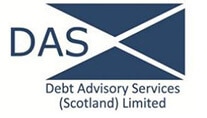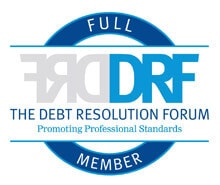Debt Management Plan Protocol
Aims of Protocol
This Protocol aims to protect and promote the needs and best interests of consumers who take out debt management plans (DMPs). In particular, it aims to ensure that consumers who choose a DMP subject to this Protocol are assured of a high standard of service that is demonstrably in their best interest and is fully compliant with statutory requirements and best practice
All providers who offer protocol DMPs must ensure that they comply with the terms of this protocol and with relevant OFT consumer credit guidance. A provider cannot claim to comply until they have been through the monitoring process and have been cleared by the Standing Committee (see paragraph 14) as up to the standard required by this Protocol.
1. Adverts & marketing
1.1 Marketing of debt advice services, including DMPs, should be clearly distinguishable as such and have regards to the OFT Debt Management Guidance and all relevant codes of practice, in particular, to the principles of legality, decency, honesty and truthfulness.
1.2 DMPs should not be promoted in such a way or to such an extent as to amount to harassment or in a way that causes fear or distress (e.g. by ‘cold calling’).
1.3 Any fees and charges quoted for the DMP must be clear, truthful, complete and transparent.
1.4 Subscribers to the DMP Protocol can use the Protocol badge to make clients, prospective clients and creditors aware that their services are offered in compliance with a ‘self-regulatory DMP Protocol’.
1.5 The DMP Protocol should help consumers choose businesses that have promised to provide a higher standard of customer service than required by law. A compliant provider wishing to demonstrate its commitment to these higher standards can display a Protocol badge accompanied by prescribed words that will be agreed by the Standing Committee.
1.6 Subscribers to the DMP Protocol must not offer both Protocol compliant and non-compliant DMPs.
1.7 Subscribers to the DMP Protocol will alert their clients, both orally and in writing, to the fact that free-to-consumer debt advice and debt management services are available. This will be done in an easily understood format, will be neutral in expression and will include a link to the Money Advice Service website on all providers’ home web pages. Annex 1 to this Protocol sets out the Information Sheet that should be sent out to all clients ahead of agreeing a contract and that should be available on a Provider’s website.
2. Advice & Proposals
2.1 A DMP should only be offered following a full assessment and reasonable steps to verify the client’s circumstances and only where this assessment indicates that a DMP is the most sustainable and appropriate course of action to resolve the client’s debt problem. Full account should be taken of the client’s preferences at this stage of the process and of the full suite of debt management/debt relief options that are available and suitable, not just those that the provider can offer, should be discussed.
2.2 A DMP should only be offered if
-
The plan would include 2 or more unsecured debts
-
There is a budget surplus (and it is less than the sum of the contractual payments), including following the deduction of any prospective DMP fees
-
The DMP is projected to pay off each debt within 10 years or there is potential that improved circumstances will reduce full repayment to within 10 years and these circumstances are recorded. (In exceptional circumstances a DMP may be offered where the plan will run for more than 10 years and there is unlikely to be an improvement in circumstances. In such cases the provider should record reasons why the plan was offered to satisfy subsequent monitoring.)
2.3 The Common Financial Statement (CFS) or equivalent recognised guidelines should be used to complete the client’s financial statement. All unusual items should be explained.
2.4 DMP proposals should be completed in compliance with the applicable requirements and guidance issued by regulatory authorities (e.g. OFT) and relevant associations (e.g. DEMSA; DRF)
2.5 DMP Providers should take reasonable steps to ensure that their client includes information about all of their debts (both secured and unsecured) and assets when assessing their income and expenditure within the DMP.
3. Administration
3.1 Following appointment as the client’s third-party, DMP providers should, without delay and in any event within 10 working days, inform the client’s creditors of their appointment (including the client’s informed consent) and its purpose.
3.2 DMP Providers should share all data1 of which they are aware with creditors that is required to identify and evidence the DMP.
3.3 DMP Providers should inform creditors when a DMP has broken within 30 days of the payment failure.
3.4 DMP Providers should always acknowledge their mandates to act for the client when requested.
3.5 The standard information that should be available to creditors includes: Provider details, Client’s personal details, all creditors, summary of budget analysis, proposed monthly contribution and date of first payment, duration of DMP and why it is an appropriate solution, details of any other material assets that may affect the outcome of proposals. This will ensure transparency, consistency and efficiency. Creditors and providers remain free to agree individual preferences on reporting formats.
3.6 All information provided to creditors must be objective, complete and accurate.
3.7 DMP agreements must include a 14-day cooling off period and be made in writing.
3.8 Consumer client funds must be held in a ring-fenced client bank account and paid to creditors at the earliest opportunity2. Withholding payments in pursuit of making a full and final settlement will be considered a breach of this protocol.
3.9 DMPs should be reviewed with the client by the provider within the first twelve months and thereafter at least annually. Any amendments proposed to reflect changes in the client’s circumstances should be explained to creditors without delay and before instigation. The provider should bear the cost of all reviews.
3.10 At least every 6 months, the client should receive (or have online access to) a statement of account from the DMP Provider showing (as a minimum) payments made and outstanding balances for each debt subject to the plan.
3.11 Providers and their affiliates should not sell on any products to the client that would delay or damage payments to existing creditors or extend the client’s over-indebtedness.
3.12 All existing debts within a DMP will be paid pro rata3; all available monies will be used to reduce the client’s debts.
3.13 DMP Providers will respond to all creditor queries within 10 working days, including whether a debt is included, or should be included, within a DMP.
4 Training
4.1 In order to offer a protocol compliant DMP a provider must have in place a formal training process for its staff. Verification of the policies, practices and procedures in relation to training will be included in the regular monitoring process.
4.2 This will include working with the Money Advice Service and those appointed by them to work up and implement best practice standards in debt advice delivery.
5. Fees
5.1 All DMP fees information should be provided to the client at the initial point of enquiry and be clear, transparent and complete. DMP fees information should be confirmed in writing to the client before conclusion of the contract and set out clearly so that the client knows what the total cost to him/her of the DMP will be. Creditors should be made aware of the fees being charged at the time of first contact from the provider.
5.2 DMP fees should be reasonable, consistent and structured to promote the sustainability of the plan.
5.3 DMP Providers should not charge any fee before a contract is signed and the agreed monthly payments from the client have commenced.
5.4 Any fees charged by the Provider in relation to the DMP should result in creditor distributions starting in month 1 of the DMP (subject to paragraphs 10.1, 10.5, 11.2, 11.3 and 11.4).
5.5 DMP Providers will spread the initial fees charged to set up a DMP evenly over at least the first 6 months of the plan. Any further management fees will be charged evenly over the lifetime of the plan.
5.6 Disbursements to creditors should begin at month 1 unless the creditor(s) has failed to provide sufficient account information for disbursement to begin. Such failure should be clearly recorded and distribution should commence at the earliest opportunity thereafter. Providers should always forewarn clients and creditors of the need to provide prompt and accurate information to help facilitate disbursement at month 1.
5.7 If a client moves from a DMP to another form of debt management offered by the Provider, the fee charged for such a move should reflect only the additional work needed. Any additional fee should be justified by the Provider.
6. DMP data
6.1 Providers should retain DMP records for ongoing monitoring purposes to demonstrate compliance with relevant regulatory guidance and the terms of this Protocol (see section 7 below). The records should be maintained for as long as is necessary for such monitoring purposes and should be held and stored in accordance with Data Protection Act principles. A Provider’s clients must be told how and when such information will be used.
6.2 The Standing Committee reserves the right to ask for reasonable further information in order to allow governance over the Protocol. Data to be recorded and retained should include:
-
Client records (e.g. I+E) and agreements
-
Total number of plans in operation
-
Total value of plans in operation
-
Projected length of individual plans in operation
-
Number of breakages (and reasons why)
-
Number of completed plans
-
Details of any non-compliant creditor actions
-
Number of DMPs that were converted into IVA or other insolvency measures (particularly those that would result in a second provider fee)
6.3 As requested, anonymised data (b – h above) should be made available to The Insolvency Service under its remit to collect and integrate consistent data on behalf of the Standing Committee.
7. Monitoring
7.1 DMP Providers should be independently monitored by a recognised auditing/regulatory body at least every 12 months to demonstrate compliance with relevant regulatory guidance and the terms of this Protocol. This will include vetting of the Provider’s initial advice interview with a client and must demonstrate that the advice given was appropriate and balanced and that the client’s surplus income was calculated correctly; and post-implementation contact with the client to ensure on-going advice and management remain appropriate and the service is consistent.
7.2 Evidence of any material deviation from the relevant regulatory guidance should be submitted to the Office of Fair Trading within 3 months of completion for their consideration.
7.3 Summary results of all monitoring visits should be reported to the Standing Committee who can then determine whether further action is appropriate, which could include removing a Provider’s protocol compliant status.
7.4 Subject to signing a template data processing agreement prescribed by the Standing Committee, Creditors will be permitted, solely in relation to customers where that Creditor has a financial interest, to physically visit Providers’ premises and inspect and monitor the information, payment processing, and account status related to their customers. Such creditor visits should be proportionate and not more frequent than once per year unless there is a direct cause of action/concern that the Creditor has shared with the Provider and the Standing Committee.
7.5 As part of the regular inspection, Providers client bank accounts will be inspected on at least an annual basis; the results of this inspection will be shared with creditors and regulators.
8. Complaints Procedure
8.1 DMP Providers should operate a free and transparent complaints procedure and ensure that customers are provided with details of the procedure both prior to and on conclusion of the DMP agreement, including their entitlement to refer their complaint to any relevant trade association or independent complaints body; such as the Financial Ombudsman Service.
Creditor standards
Compliance with the terms of this protocol should be incorporated within the appropriate best practice lending code to which the creditor subscribes. Compliance with the terms of this protocol should be regarded as an appropriate business practice towards compliance with relevant OFT consumer credit guidance.
9. Breathing space
9.1 On receipt of appropriate evidence that a client is engaged with a DMP Provider to develop a protocol-compliant plan, creditors should extend an initial breathing space of at least 30 days (with the possibility of extension where demonstrable progress is being made but is not yet complete).
8.2 Breathing space will include the suspension of all collections activity relating to the debts under consideration with the DMP Provider.
10. Cooperation with DMP providers
10.1 Creditors should fully and constructively cooperate with Protocol-compliant DMP providers and provide all relevant and reasonably requested material within 10 working days of receipt of request (with the customer’s informed consent).
10.2 If a creditor becomes aware of a subscriber’s wilful non-compliance with the Protocol then it should, where available and where relevant to non-compliance with the OFT Debt Management Guidance, provide evidence of this non-compliance to the OFT.
10.3 In accordance with section 3.48 of the OFT Debt Management Guidance, creditors may refuse to deal with a DMP provider if that provider fails to comply with relevant legislative requirements and/or the OFT Guidance.
10.4 When requested, creditors should provide account balance information to DMP Providers within 10 working days of receipt of that request. The purpose of such a data request will be to allow the DMP Provider to produce six-monthly statements of account for their client.
10.5 Creditors must notify DMP Providers where a debt has been assigned.
11. Acceptance of offers
11.1 Creditors should accept protocol-compliant DMP proposals unless they have, or are aware of, information that might materially impact upon the suitability of the proposal. Where this is the case, the information should be shared with the DMP Provider unless inappropriate to do so (e.g. legal, privacy implications).
11.2 Creditors should advise the provider within 10 working days of the repayment proposal being received, whether interest and charges will be frozen and, where this is not the case, the amount at which these will be applied going forward.
11.3 Creditors should report the rejection of any repayment proposal to the Provider within 10 working days of receipt of that proposal, stating the reason for the rejection and the intended course of action. Acceptance can be deemed by the Provider if the creditor does not respond within 10 working days of receipt.
11.4 Creditors should inform the client and/or their DMP Provider before or at the time that an account is to be passed or sold to a third party,
12. Administration
12.1 Whilst a DMP continues to operate in accordance with its terms creditors will not take any collections or enforcement activity aimed at obtaining increased payments from the consumer.
12.2 Creditors will place a default against the account, in line with current practice and will place a DMP flag4 on the customer’s credit file for the duration of the arrangement to record the customer’s participation in, and progress of the plan.
12.3 Creditors will ensure that the customer is removed from their credit-related marketing lists for the duration of the DMP.
12.4 If the creditor chooses to sell a debt that is subject to a protocol-compliant DMP, the debt-buyer must be contractually obliged to honour the existing plan for as long as it operates in accordance with its terms
13. Management Information
13.1 Creditors should retain anonymised data on the terms and performance of DMPs to which their customers are subject.
13.2 This data should be made available to The Insolvency Service as requested under its remit to collect and integrate consistent data on debt advice and debt management.
Standing Committee
14. Purpose
14.1 The efficient operation of the protocol will be monitored and reviewed by a standing committee. The standing committee is a representative group, its membership reflecting the participants in the DMP process (provider, creditor, consumer, independent monitoring agents and government). The terms of reference of the standing committee will be set by the first meeting and will be attached to the Protocol.
1 All references to ‘data’ in the Protocol are to data that is held, shared, stored and used only in compliance with Data Protection Act principles and guidance from the Information Commissioner’s Office.
2 As per the OFT Debt Management Guidance
3 Pro rata means the money is divided proportionately among creditors, according to the value of the individual debt.
4 Compliance is subject to implementation of DMP Flags, currently being developed by the credit reference agencies.


